HS2 has revealed new timelapse footage showcasing a significant engineering feat: the careful three-day slide of a 1,300-tonne viaduct deck into position near the Northamptonshire village of Thorpe Mandeville. This milestone brings the Northants section of the high-speed railway closer to completion, even as the broader project undergoes a fundamental reset.
The steel and concrete deck of the Lower Thorpe Viaduct, spanning 220 metres, was meticulously assembled off-site before being slid into its final alignment, reaching the north abutment on Friday 20th June. Set within a valley, the viaduct is designed to carry high-speed trains while also managing flood risk by ensuring natural water runoff into existing watercourses. Its distinctive russet-coloured weathering steel has been chosen to harmonise with the surrounding countryside.
The intricate sliding operation employed special pads covered in PTFE – a Teflon-like material commonly found on non-stick frying pans – to minimise friction between the deck and the temporary steel bearings atop each of the five concrete piers.
This marks the last of five viaducts to be constructed using this innovative technique by HS2’s main works contractor for the central section, EKFB – a joint venture comprising Eiffage, Kier, Ferrovial Construction, and BAM Nuttall – in collaboration with specialists at Eiffage Metal. With the steelwork now securely in place, engineers will proceed to the next stage: lowering the deck by 60cm onto its permanent bearings, before commencing work on the concrete deck and parapets.
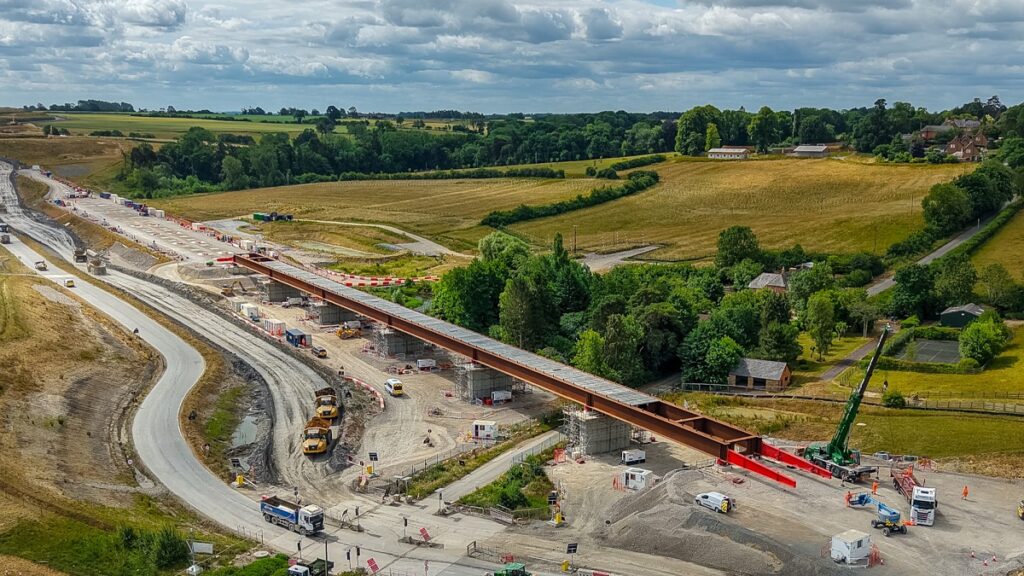
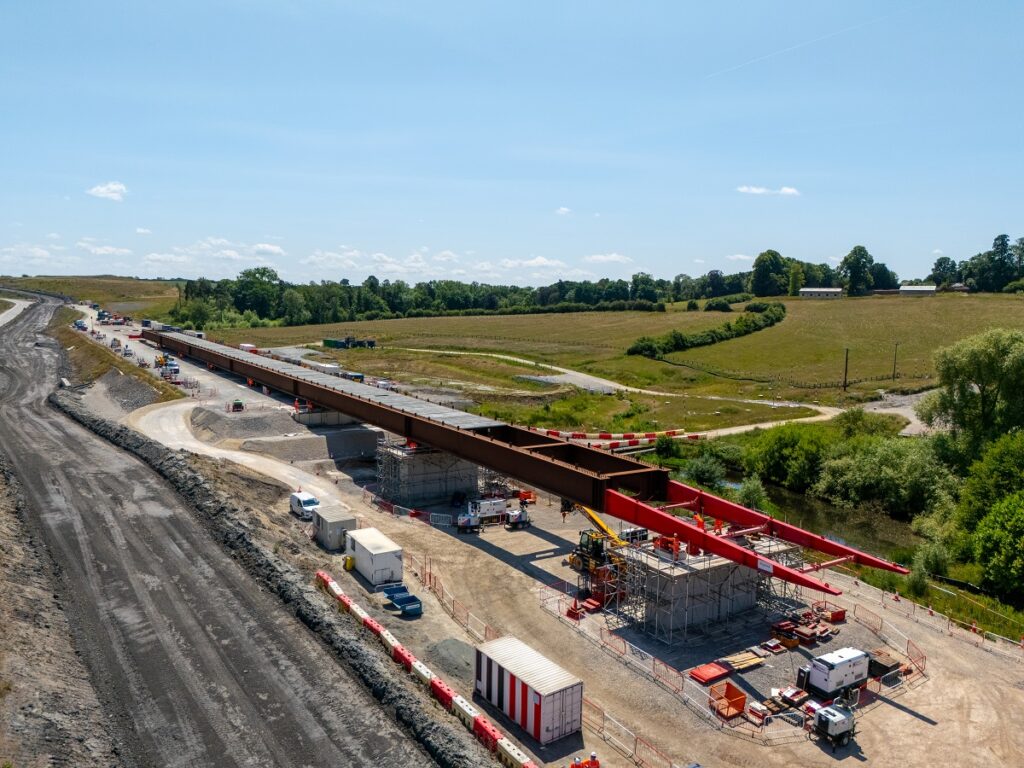
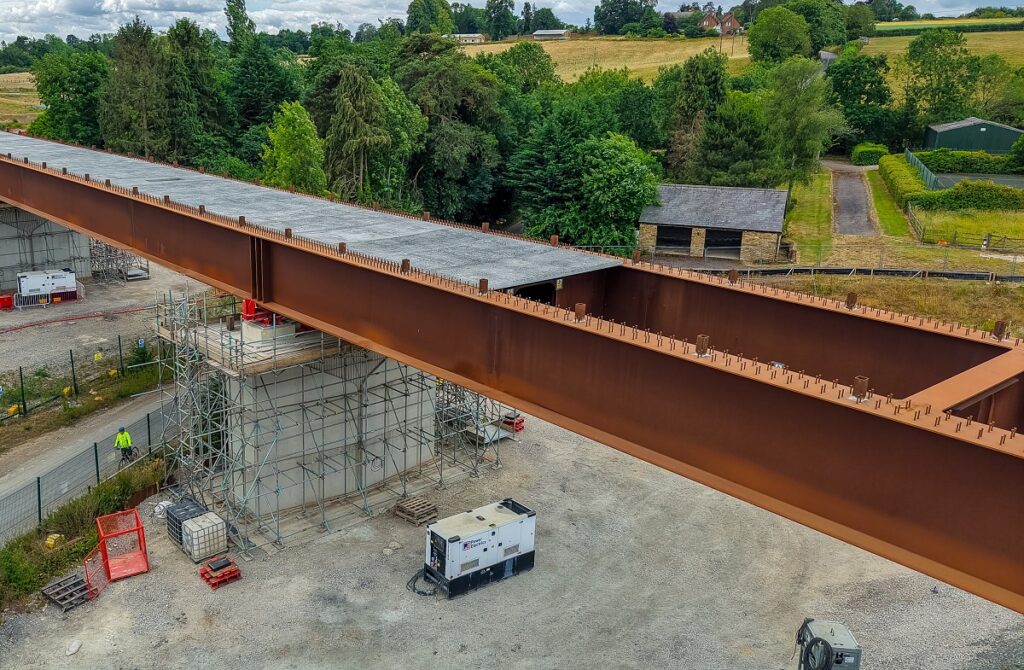
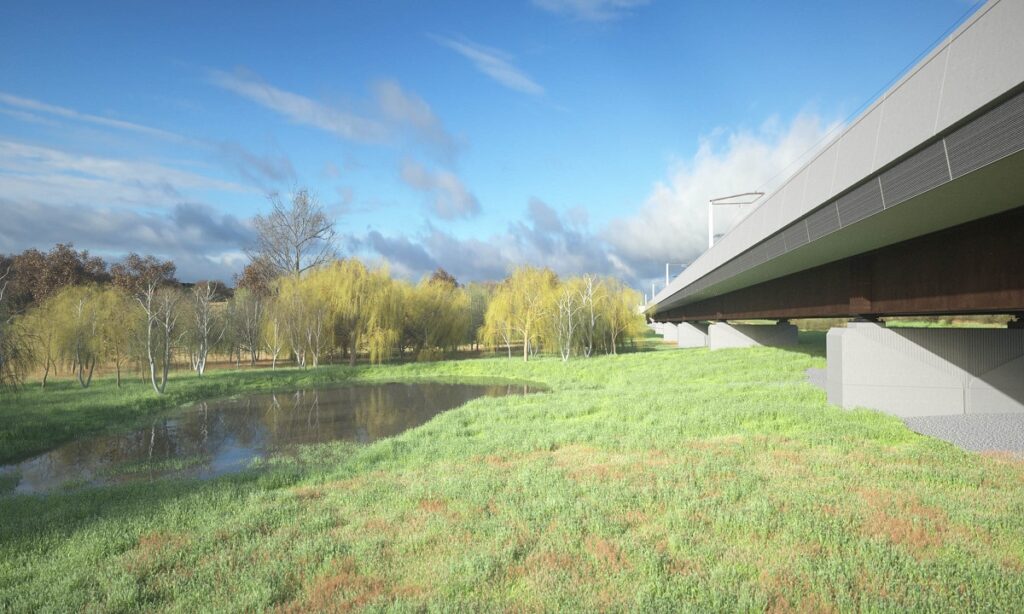
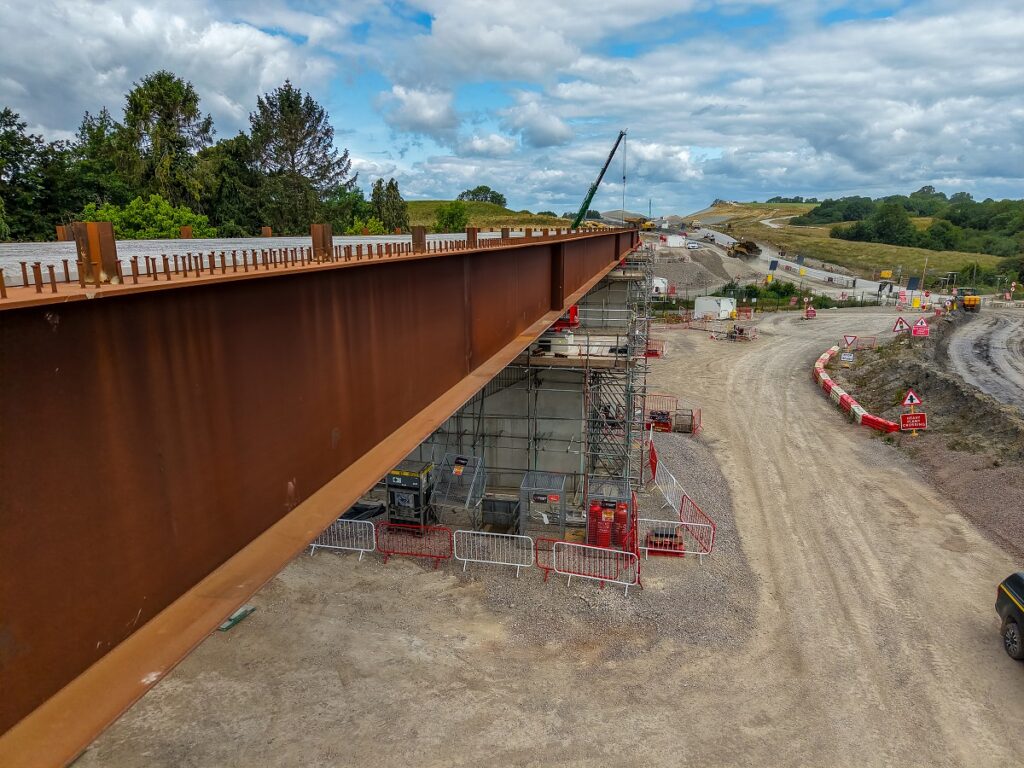
Sam Arrowsmith, HS2 Ltd Project Manager, commented: “It’s great to see the viaduct deck in position and I’d like the thank everyone who’s helped get us to where we are today. The slide may only have taken three days, but it was the culmination of four years of work – developing the design, completing the groundworks and the piers and assembling the enormous steelwork.”
Despite the ongoing project reset initiated by HS2 Ltd’s CEO, Mark Wild, aimed at delivering the railway at the “lowest reasonable cost,” HS2 and its contractors continue to make tangible progress on key civil engineering elements, including viaducts, earthworks, stations, and tunnels.
EKFB is responsible for delivering 15 major viaducts for HS2 between the Chilterns and South Warwickshire, with Lower Thorpe being the final one installed via the sliding method.
Sustainable and Innovative Design
These five viaducts share a novel ‘double composite’ structure, which significantly reduces their carbon footprint. This design utilises substantially less carbon-intensive concrete and steel compared to traditional methods. Instead of solid pre-stressed concrete beams, the hollow structure incorporates steel beams along the sides, with reinforced concrete layers on the top and bottom to create a stronger, more efficient span. This approach has slashed the viaducts’ carbon footprint by between 39% and 59% compared to traditional crane-lifted, pre-stressed concrete beams, while also allowing for longer spans and shallower beams.
Janice McKenna, EKFB’s Technical Director, explained: “The strategic design approach applied to these double composite structures has been a game-changer in how we’re building these viaducts. The double composite solution can be applied to multiple structures in different locations, and we have five across EKFB’s 50-mile route that are all well into construction.”
She added: “The philosophy was to design the viaducts with architectural input to ‘blend’ the structures into their respective landscapes and reduce the visual impact on the environment. We also required a solution that offered specific delivery benefits too, from saving embedded carbon in the materials we use, to enhancing productivity on site and reducing safety risk.”
Once completed, the viaduct will carry high-speed trains between London and the West Midlands, improving journeys and freeing up crucial capacity on the existing mainline for more freight and local services.
The other four double composite viaducts – Wendover Wean, Small Dean, Westbury, and Turweston – are all in more advanced stages of construction. The Westbury viaduct, near Brackley, is currently the most advanced, with engineers working on the concrete deck that will support the track and parapets. This is being created using a cantilever formwork traveller, a mould that enables efficient individual pours for each of the eight spans. Once a pour is finished, winches pull the traveller forward for the next section, reducing the number of pours, eliminating the need for cranes, and enhancing efficiency and cost-effectiveness. This lighter, easier-to-install traveller also improves safety by providing better access for operatives, reducing accident risks.



